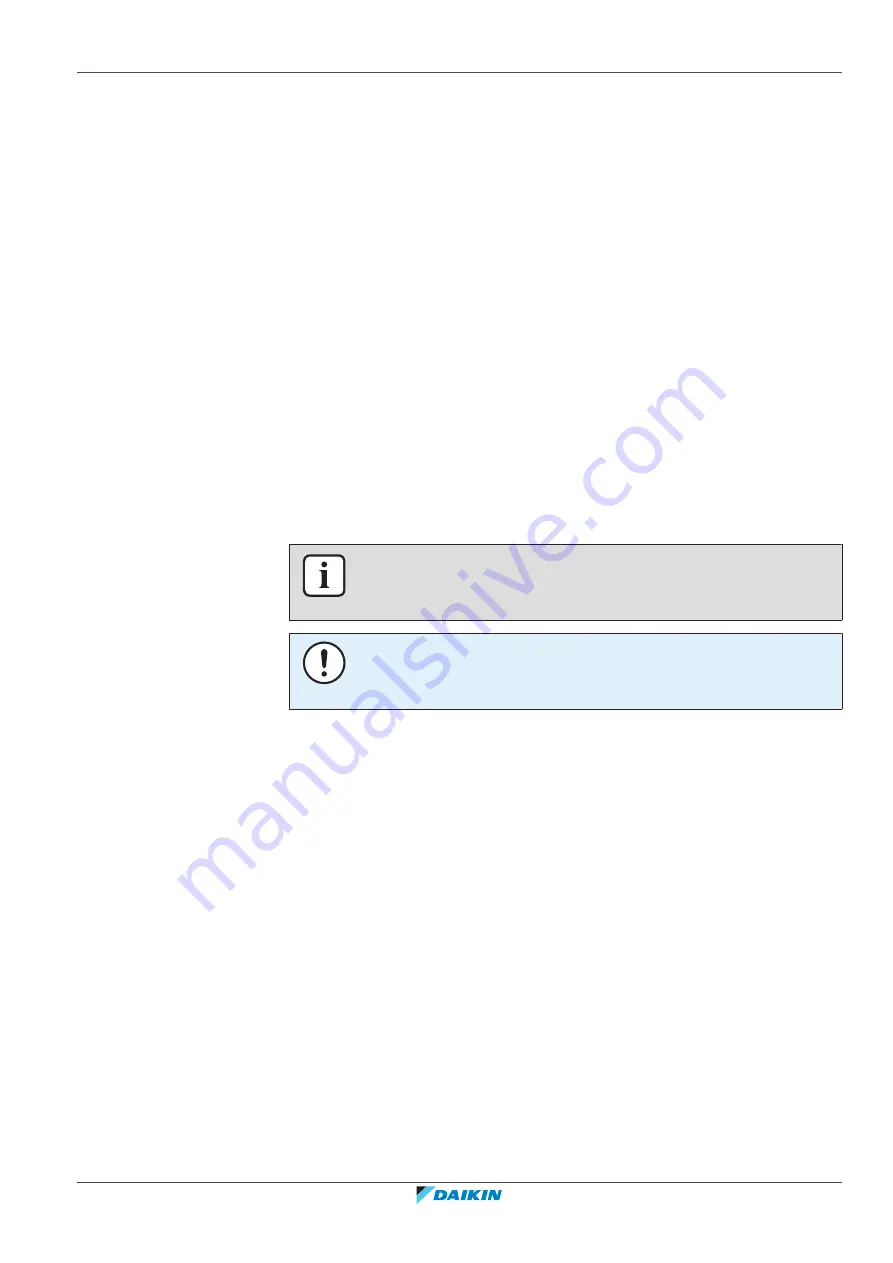
8
|
Piping installation
Installer reference guide
81
EPRA14~W1 + ETVH/9W
Daikin Altherma 3 H HT F
4P644737-1 – 2021.02
8 Piping installation
In this chapter
8.1
Preparing water piping ...........................................................................................................................................................
81
8.1.1
Water circuit requirements ...................................................................................................................................
81
8.1.2
Formula to calculate the expansion vessel pre-pressure......................................................................................
83
8.1.3
To check the water volume and flow rate.............................................................................................................
84
8.1.4
Changing the pre-pressure of the expansion vessel .............................................................................................
86
8.1.5
To check the water volume: Examples ..................................................................................................................
86
8.2
Connecting water piping ........................................................................................................................................................
87
8.2.1
About connecting the water piping .......................................................................................................................
87
8.2.2
Precautions when connecting the water piping....................................................................................................
87
8.2.3
To connect the water piping..................................................................................................................................
87
8.2.4
To connect the recirculation piping.......................................................................................................................
90
8.2.5
To fill the water circuit ...........................................................................................................................................
90
8.2.6
To protect the water circuit against freezing ........................................................................................................
91
8.2.7
To fill the domestic hot water tank........................................................................................................................
94
8.2.8
To insulate the water piping ..................................................................................................................................
94
8.1 Preparing water piping
8.1.1 Water circuit requirements
INFORMATION
Also read the precautions and requirements in the
"2 General safety
precautions"
[
4
10].
NOTICE
In case of plastic pipes, make sure they are fully oxygen diffusion tight according to
DIN 4726. The diffusion of oxygen into the piping can lead to excessive corrosion.
▪
Connecting piping – Legislation.
Make all piping connections in accordance with
the applicable legislation and the instructions in the "Installation" chapter,
respecting the water inlet and outlet.
▪
Connecting piping – Force.
Do NOT use excessive force when connecting the
piping. Deformation of the piping can cause malfunctioning of the unit.
▪
Connecting piping – Tools.
Only use appropriate tooling to handle brass, which is
a soft material. If NOT, pipes will get damaged.
▪
Connecting piping – Air, moisture, dust.
If air, moisture or dust gets into the
circuit, problems may occur. To prevent this:
-
ONLY use clean pipes.
-
Hold the pipe end downwards when removing burrs.
-
Cover the pipe end when inserting it through a wall, to prevent dust and/or
particles from entering the pipe.
-
Use a decent thread sealant to seal connections.
-
When using non-brass metallic piping, make sure to insulate both materials
from each other to prevent galvanic corrosion.
-
Because brass is a soft material, use appropriate tooling for connecting the
water circuit. Inappropriate tooling will cause damage to the pipes.
▪
Insulation.
Insulate up to the base of the heat exchanger.

















































